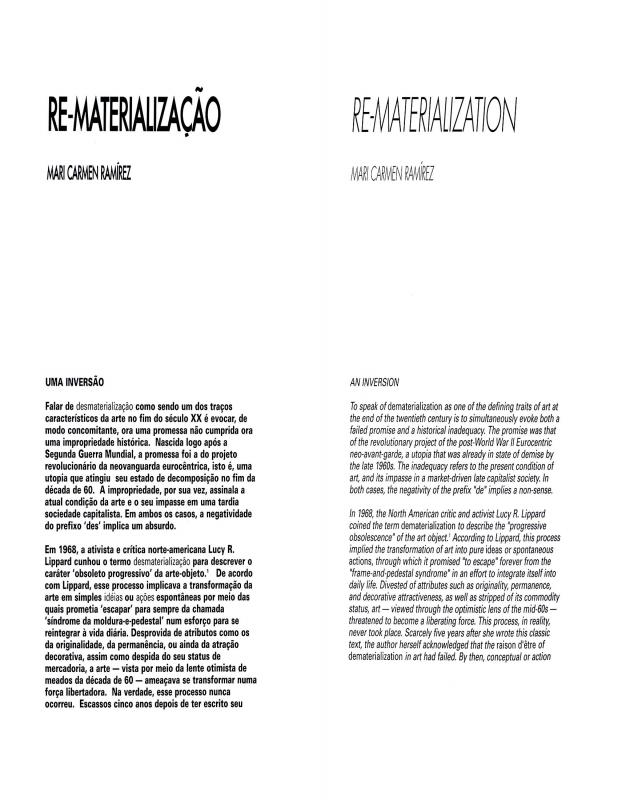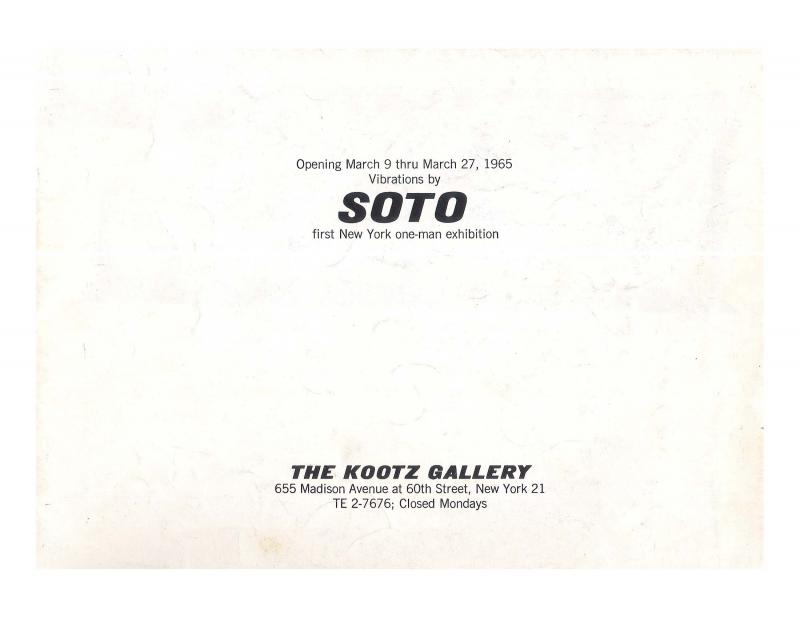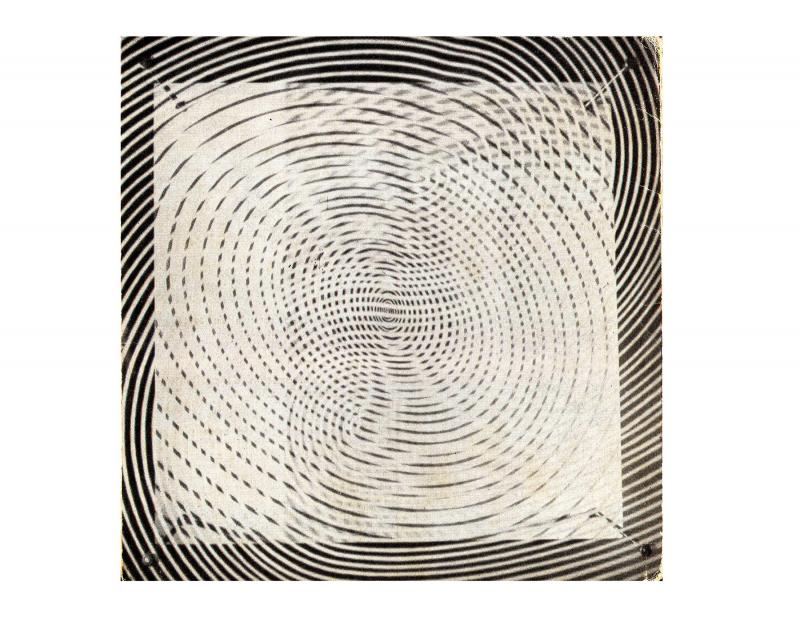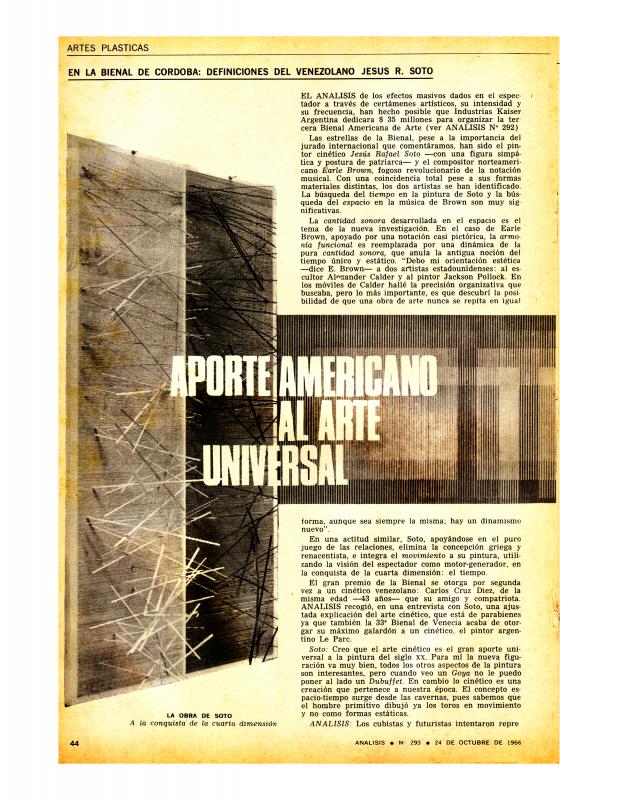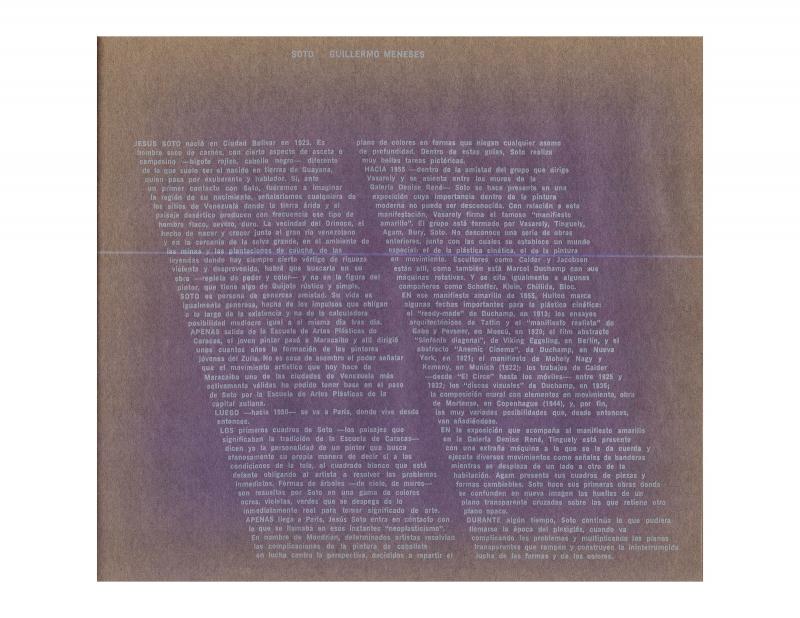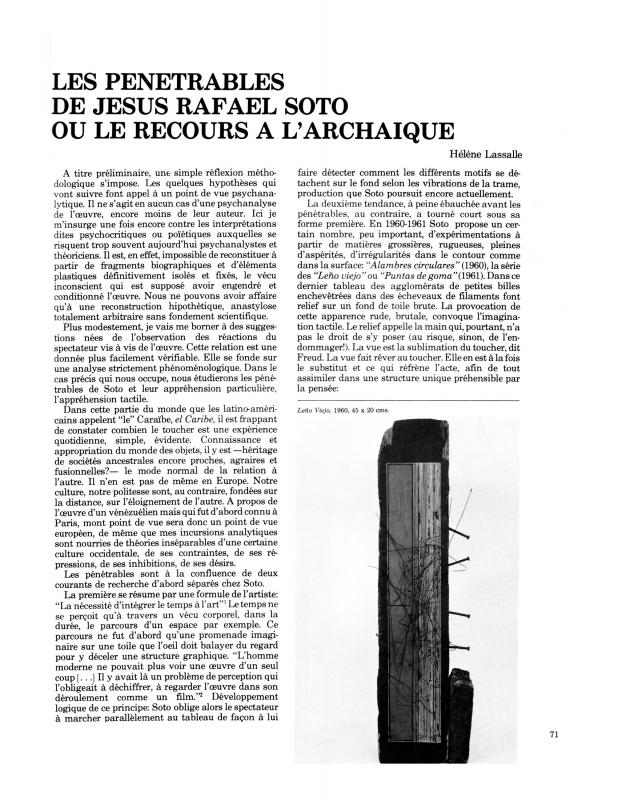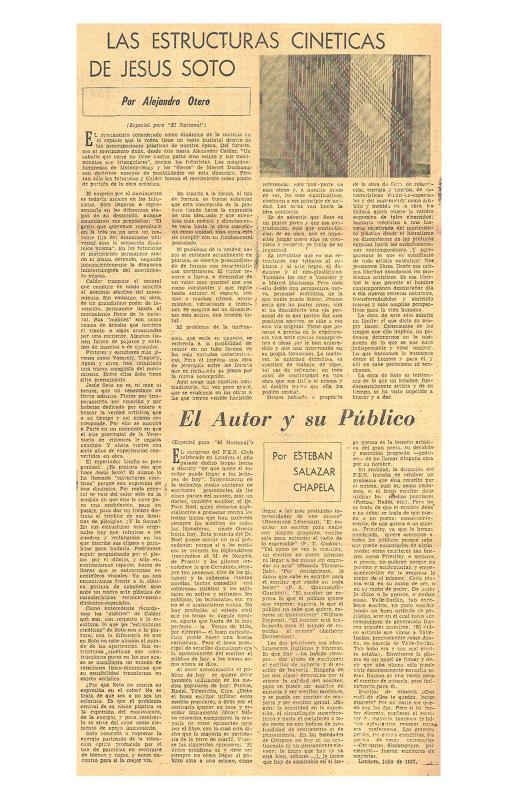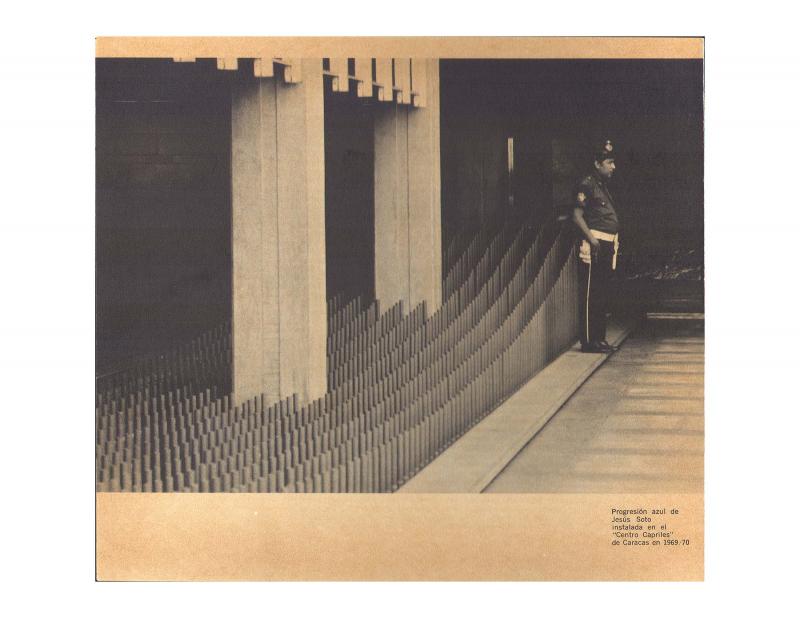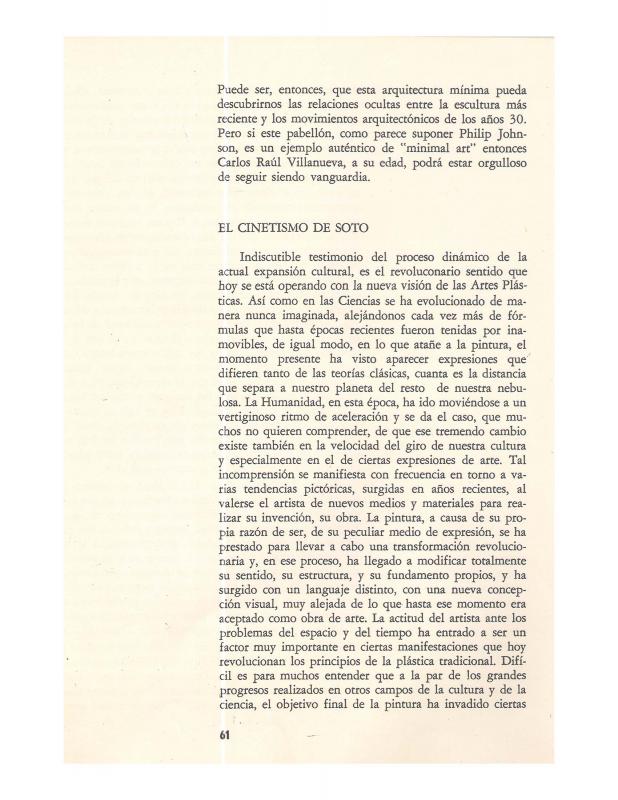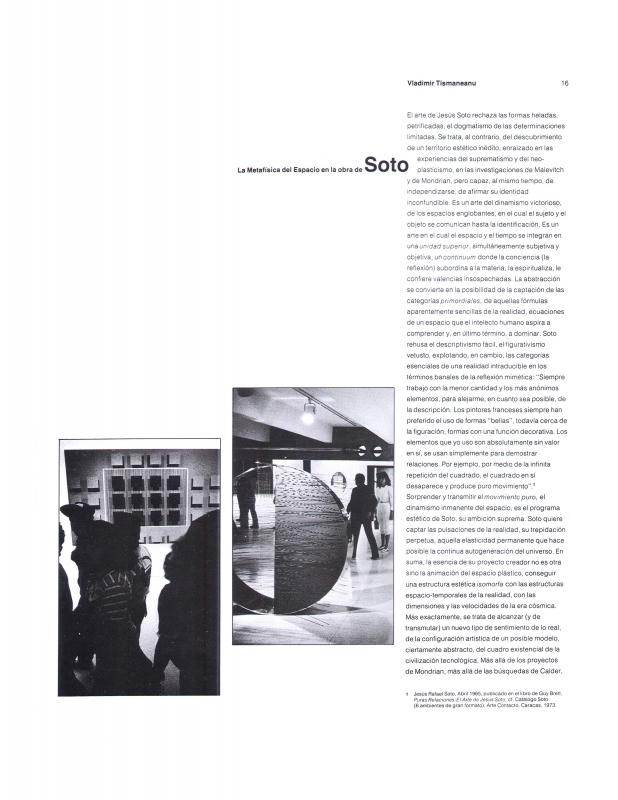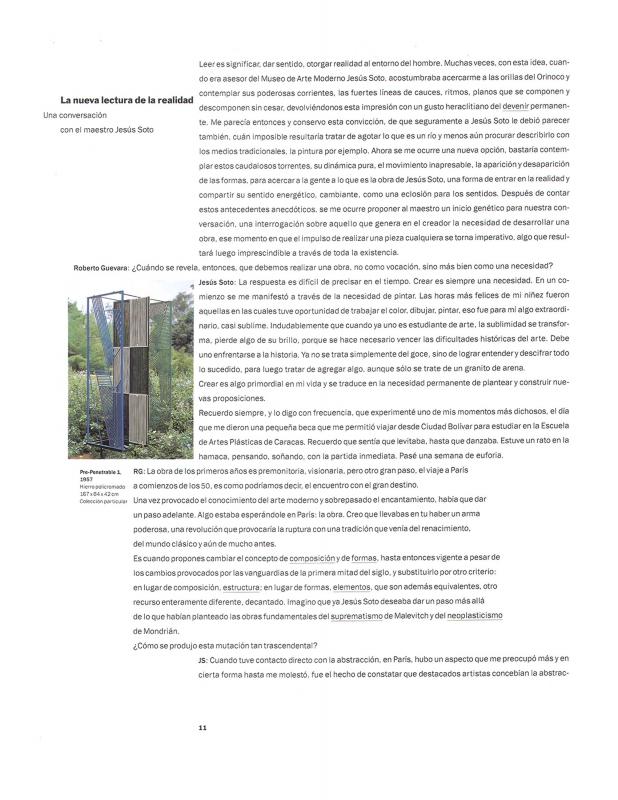This essay by the poet and critic Roberto Guevara (1932–98) was published in the catalogue for the 23ª Bienal de São Paulo, at which Guevara served as Commissioner of the Venezuelan section. In his essay, Guevara seeks to establish concrete scientific foundations for the works produced by Jesús Rafael Soto (1923–2005), referring to Albert Einstein’s theory of relativity (1905), dynamics, and the uncertainty principle in thinkers from antiquity, such as Heraclitus of Ephesus, and modern scientists such as Max Karl Planck and Werner Heisenberg. Guevara also refers to the search for “immateriality” that leads to a dematerialization of elements, identifying it as a fundamental concept of Soto’s work, which he has expressed on a number of occasions. Equally important are Soto’s explorations of the elements’ “movement,” “vibration,” and “dynamics.” Actually, Soto is not interested in a subjective impression of movement, attempting instead to create real movement within the work itself, based on the relationships between the components of the piece. These relationships are usually established by the overlaying of different physical planes; Soto therefore replaces the concepts of form and composition with the concepts of “element” and “structure.” These two interact, and their relationships create the desired effect. The theme of the 23ª Bienal de São Paulo was “the dematerialization of art at the end of the millennium” and, by that time, Soto was the acknowledged master of Kinetic Art, and a pioneer in the search for the “visual dematerialization” of volumes and solid matter in the work of art. In Soto’s words, his work seeks “to change matter back to its essential state, back to energy,” and is based on the idea of immateriality, according to critics such as Guevara.
At the XXIII Biennial organized by Nelson Aguilar in 1996, mentioned above, the essay about anti-rationalist readings that transcended the indisputable materiality of those objects (in terms of their mathematical conception and their technical construction) was written by Mari Carmen Ramírez. Contradicting the guidelines of the event in São Paulo, she explained the conflicting concept of the “Re-materialização” of art that, in her opinion, was a strong feature in the work of the selected artists [see doc. no. 1111101].
To read other critical articles about Soto’s work, see “Sin título. [Text from the catalogue Vibrations by Soto by The Kootz Gallery 1965]” [doc. no. 1069781]; “Soto: Estructuras cinéticas” [doc. no. 1059619]; “En la Bienal de Córdoba: Definiciones del venezolano Jesús R. Soto. Aporte americano al arte universal” [doc. no. 772726]; the text by Guillermo Meneses “Soto” [doc. no. 1080690]; the text by Hélène Lassalle “Les pénétrables de Jesús Rafael Soto ou le recours a l'archaïque = Los penetrables de Jesús Rafael Soto o el recurso de lo arcaico” [doc. no. 805856]; the text by Alejandro Otero “Las Estructuras cinéticas de Jesús Soto” [doc. no. 850667]; the articles by Alfredo Boulton “Jesús Soto 1971” [doc. no. 1059661] and “El cinetismo de Soto” [doc. no. 1069749]; the essay by Ariel Jiménez “Jesus Soto: Lo visible y lo posible” [doc. no. 1073684]; the article by Vladimir Tismaneanu “La metafísica del espacio en la obra de Soto” [doc. no. 1101524]; and Roberto Guevara’s essay “La nueva lectura de la realidad: Una conversación con el maestro Jesús Soto” [doc. no. 1059731].

